|
|
What is Coccidiosis?PronunciationPronunciation: (cock sid' ee uh) What is Coccidiosis?About 60% of all puppies have coccidia parasite in their digestive systems. Many puppies are never affected by this protozoa. Stress can cause the coccidia to flourish, and this can lead to diarrhea. In extreme cases, the puppy can get severely dehydrated, so it's best to just medicate preventatively in our opinion. We have a strict regimen of prevention while puppies are here. Coccidiosis is an intestinal disease that affects several different animal species including canines and humans. Coccidia is one of the most prevalent protozoal infections in North American animals, second only to Guardia. Eimeria and Isospora are the two genera that are often referred to as "coccidia." These two genera contain a large number of species that infect a variety of animals throughout the world. The diseases caused by these microscopic protozoal parasites are referred to collectively as Coccidiosis, and they vary tremendously in virulence. Some species cause diseases that result in mild symptoms that might go unnoticed (I.e., mild diarrhea) and eventually disappear, while other species cause highly virulent infections that can be rapidly fatal. The causative agent is a protozoan that has the ability to multiply rapidly. The major damage is due to the rapid multiplication of the parasite in the intestinal wall, and the subsequent rupture of the cells of the intestinal lining. Several stages of multiplication occur before the final stage, the oocyst, is passed in the feces. Oocysts are extremely resistant to environmental stress and are difficult to completely remove from the environment. Oocysts are frequent contaminants of feed and water and when the sporulated Oocysts are ingested by other animals they start the life cycle over in the new host. Life Cycle of CoccidiaThe life cycles of both genera of coccidia are similar. A host is infected when it ingests Oocysts that have been passed in the feces of another host. The oocyst encysts in the host's small intestine, and the sporozoites contained within the oocyst are liberated. The sporozoites penetrate the cells of the host's small intestine and reproduce asexually. Each generation of asexual reproduction produces multiple merozoites; the merozoites are liberated from the cell and infect new cells. It is this stage of the infection that can result in destruction of massive numbers of cells in the host's small intestine and, ultimately, lead to the host's death. Some of the merozoites that enter the host's cells transform into gametocytes. The gametocytes transform into gametes, the gametes fuse, and the resulting zygote begins to develop into an oocyst. The developing oocyst escapes from the host's cell, and it is passed in the host's feces. Typically, when the oocyst is passed in the feces, it is not infective because it does not contain sporozoites; this is an unsporulated oocyst. After several days (or weeks, depending on the species) outside of the host's body, the oocyst completes development and sporozoites are found within; this is a sporulated oocyst, and it is infective to the next host. Clinical SignsClinical signs of Coccidiosis usually are present or shortly following stress such as weather changes; weaning; overcrowding; long automobile or plane rides; relocation to a new home and new owners; and/or unsanitary conditions. Symptoms or signs of Coccidiosis will depend on the state of the disease at the time of observation. In general, Coccidiosis affects the intestinal tract and symptoms are associated with it. In mild cases, only a watery diarrhea may be present, and if blood is present in the feces, it is only in small amounts. Severely affected animals may have a thin, watery feces with considerable amounts of intestinal mucosa and blood. Straining usually is evident, rapid dehydration, weight loss and anorexia (off food) also may be clinically visible. One of the most prevalent canine coccidia is S. Tenella and during autopsies of dead animals appears as microscopic muscle cysts in the host animal. Oocysts in the feces of dogs are also microscopic in size and can only be positively identified through lab tests or direct observation under a microscope. "Nervous Coccidiosis" is a nervous system condition associated with coccidial infection. Signs are consistent with central nervous system involvement, and include muscle tremors, convulsions and other central nervous system symptoms. A consistent sign in "nervous cocci" dogs is that stimulation of any type seems to trigger the symptoms. Death may follow the acute disease either directly or from secondary diseases such as pneumonia. Animals that survive for 10 to 14 days may recover, however, permanent damage may occur. Research has indicated that canines may experience reduced food consumption for up to 13 weeks following clinical infection. Diagnosis usually is obvious but confusion does exist - apparently normal animals can also have Oocysts present in their feces. Diarrhea may be present in the animal before the Oocysts can be found, therefore, a confirmed laboratory diagnosis may not always be possible. Laboratory findings should be correlated with clinical signs for a diagnosis. The susceptibility of animals to this disease varies. The ingestion of Oocysts may not produce the disease; some animals constantly carry them without being affected. Recovered animals develop immunity and seem to be partially resistant to reinfection. Coccidiosis is frequently referred to as an opportunist - a disease that will develop when other stress factors are present. For example, the highest incidence of Coccidiosis is in the first 21 days after a dog has changed owners and moved to a new residence. If a normal animal carries Oocysts, it is relatively easy for rapid development when the conditions are right - adverse weather, shipping, dog food changes, new owners, new residence, and other stresses are important. How can I be sure my dog has Coccidia?Diagnosing coccidia is not easy. Diagnosis can be done in one of two ways: via fecal sample by a Vet or via educated evaluation of clinical findings by the breeder/owner or the Vet. Via fecal sample is not straightforward. Even when a flare is at it's worst, the Oocysts may not be shedding in every single stool. Therefore, a negative report does not rule out coccidia. The most thorough way to assess is to collect a sample from every single stool produced for 48 to 72 hours and have a Vet examine it. How can infection be treated?
Ponazuril (Marquis paste) 150mg/ml Another option is daily Albon or daily Corid for 10 days, which is also very cheap but much more work. This is what we used until August of 2007. Albon 12 1/2% solution Sulfadimethoxine 12 1/2% solution. What I do is buy the Sulfadimethoxine 12 1/2% solution (generic Albon) from Lambriar Animal Health Care without a prescription and for a lot less money. Active ingredients: Each fluid ounce contains 3.75 grams Sulfadimethoxine solubilized with sodium hydroxide. I buy the one-gallon size jug of the generic brand of Albon which is the Sulfadimethoxine 12 1/2% solution for $39.95 per gallon or you could also buy the Albon 12 1/2% solution for $67.00 per gallon rather than spend $35 - $50 for the office visit and 7 to 10 lousy 125 mg prescription only pills that your Vet will sell to you. We strive to promote healthy animals and help customers save lots of money on animal health care products. Omega 3-Plus. This gallon jug of liquid Sulfadimethoxine is enough antibiotic to medicate a huge kennel full for several months or even years. If you have more than one dog to treat with the Sulfadimethoxine drug for a Coccidiosis outbreak, I highly recommend you follow in my footsteps and buy and use the gallon size jug of this medication as well as another product described below and then you can make your own 5% Albon solution just like you get from the Vet. I also purchase a gallon jug of Omega 3-Plus, which is a liquid nutritional supplement, from Lambriar Animal Health Care. I buy the one-gallon size jug for $34.95 each (price could be slightly higher now). This product is formulated to provide a nutrient dense liquid diet with essential vitamins and has a high caloric value. This product expedites the rate of recovery of weak or sick animals. It also may be fed as is or diluted with milk for animals unable to eat solid foods. Then what I do next is I mix 5 ounces of Omega 3-Plus with 4 ounces of the Sulfadimethoxine 12 1/2% solution discussed above. This gives me a very palatable mixture of the 5% Albon (Rx) at a 75% or higher savings without the required prescription or the expense of a Vet office visit. I know many breeders that are paying $60 per pint for the 5% Albon (Rx) solution that they get from their Vet. This will give you approximately 2-gallons of the 5% Albon (RX) for only $75 rather than only 1-pint that a Vet will sell you for $60 -- you figure up the savings! Once you have this 5% Albon solution mix, each teaspoonful (5 mL) will contain 250 mg of Sulfadimethoxine. Dogs should receive 1 teaspoonful of this 5% Albon Oral Suspension mixture per 10 lb of body weight (25 mg/lb or 55 mg/kg) as an initial dose, followed by 1/2 teaspoonful per 10 lb of body weight (12.5 mg/lb or 27.5 mg/kg) every 24 hours thereafter. I recommend you give this treatment for a total of 10 days. The medication may be administered in food or water, given as a drench orally. I give each dog its own food and medicine in its own feed dish to make sure each dog is getting the proper amount of food and medicine. This Sulfadimethoxine 12 1/2% solution mixed with the Omega 3-Plus will save you hundreds of dollars a year. I urge all kennels to keep a gallon of each handy. This Sulfadimethoxine 5% solution mix has a wide margin for safety, is very easy to administer, and absolutely works miracles on getting rid of Coccidiosis. Since Coccidiosis is so easily spread from one dog to the next, I highly recommend all dogs get a full treatment even if only one dog shows symptoms -- better to be safe than sorry. |
|
|
|
© 2010-2016 Shiba-Inu-Breeder.com • All Rights Reserved • www.Shiba-Inu-Breeder.com Fair Use Notice: This site may contain copyrighted material whose use has not been specifically authorized by the copyright owners. We believe that this not-for-profit, educational use on the Web constitutes a fair use of the copyrighted material (as provided for in section 107 of the US Copyright Law). If you wish to use this copyrighted material for purposes of your own that go beyond fair use, you must obtain permission from the copyright owner. |

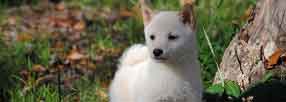
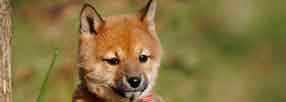
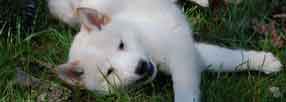
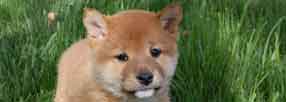
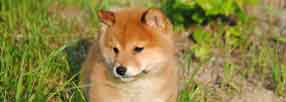
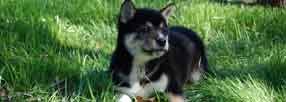
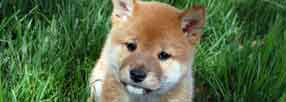
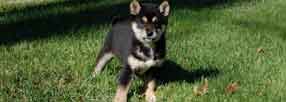
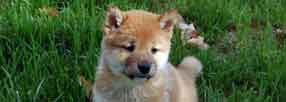
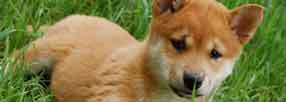
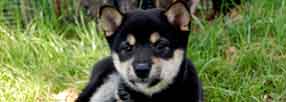
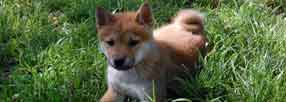
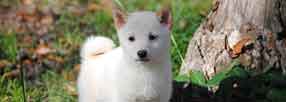
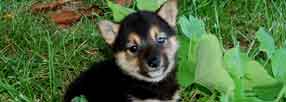
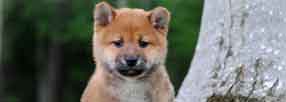

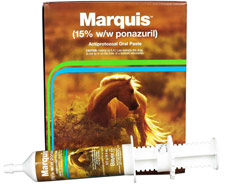 Treatment: We treat preventatively when puppies are near weaning and again
before they leave us with 1/4th to 1/2 of a cc of Ponazuril (Bayer), which is
actually an anti-protozoal medicine for horses that have EPM.
It is only about $1 per
dose (1/4th to 1/2 of a cc orally) for a 5-lb puppy, and you only do one dose
every two weeks.
Treatment: We treat preventatively when puppies are near weaning and again
before they leave us with 1/4th to 1/2 of a cc of Ponazuril (Bayer), which is
actually an anti-protozoal medicine for horses that have EPM.
It is only about $1 per
dose (1/4th to 1/2 of a cc orally) for a 5-lb puppy, and you only do one dose
every two weeks.